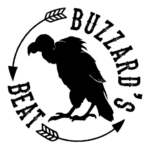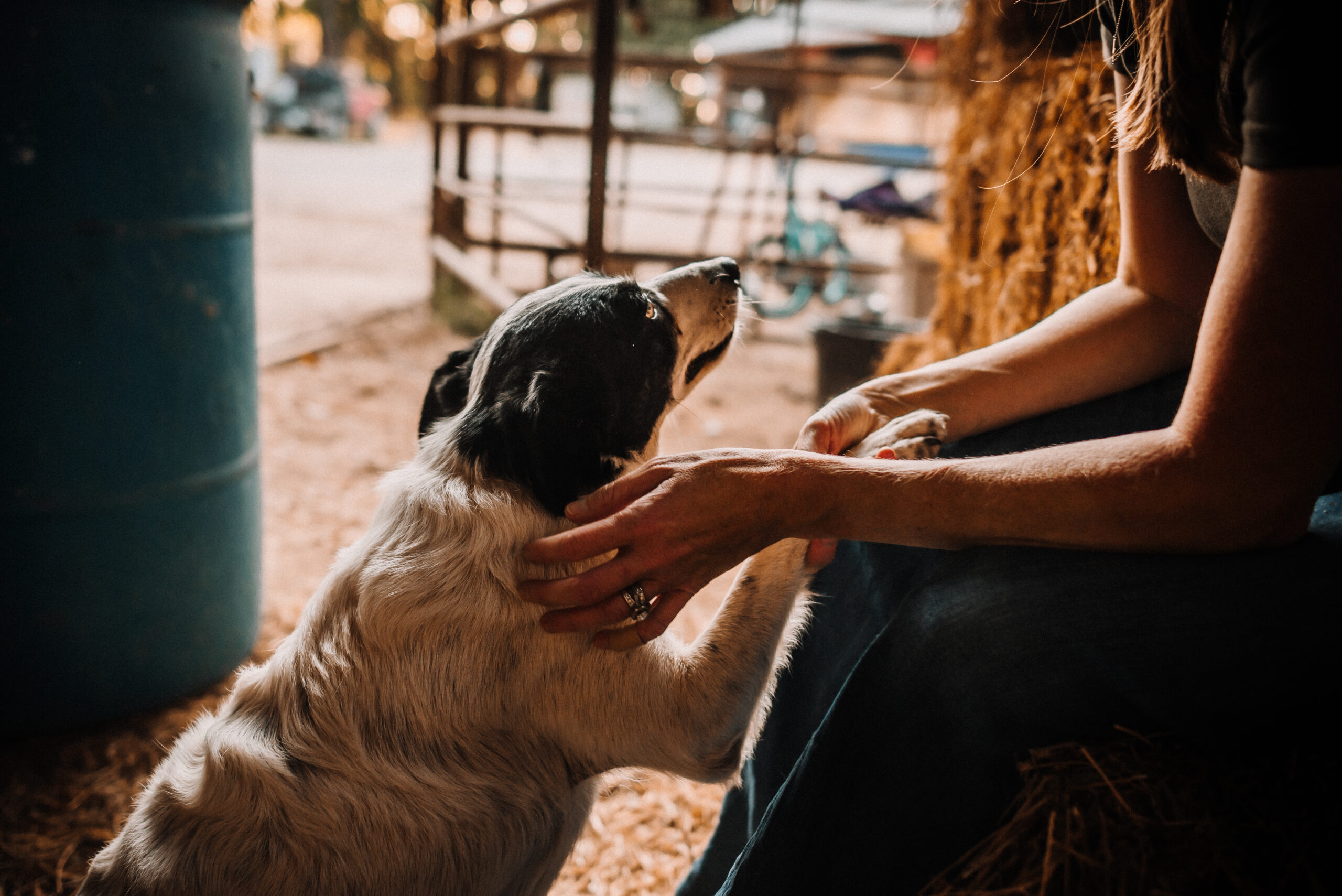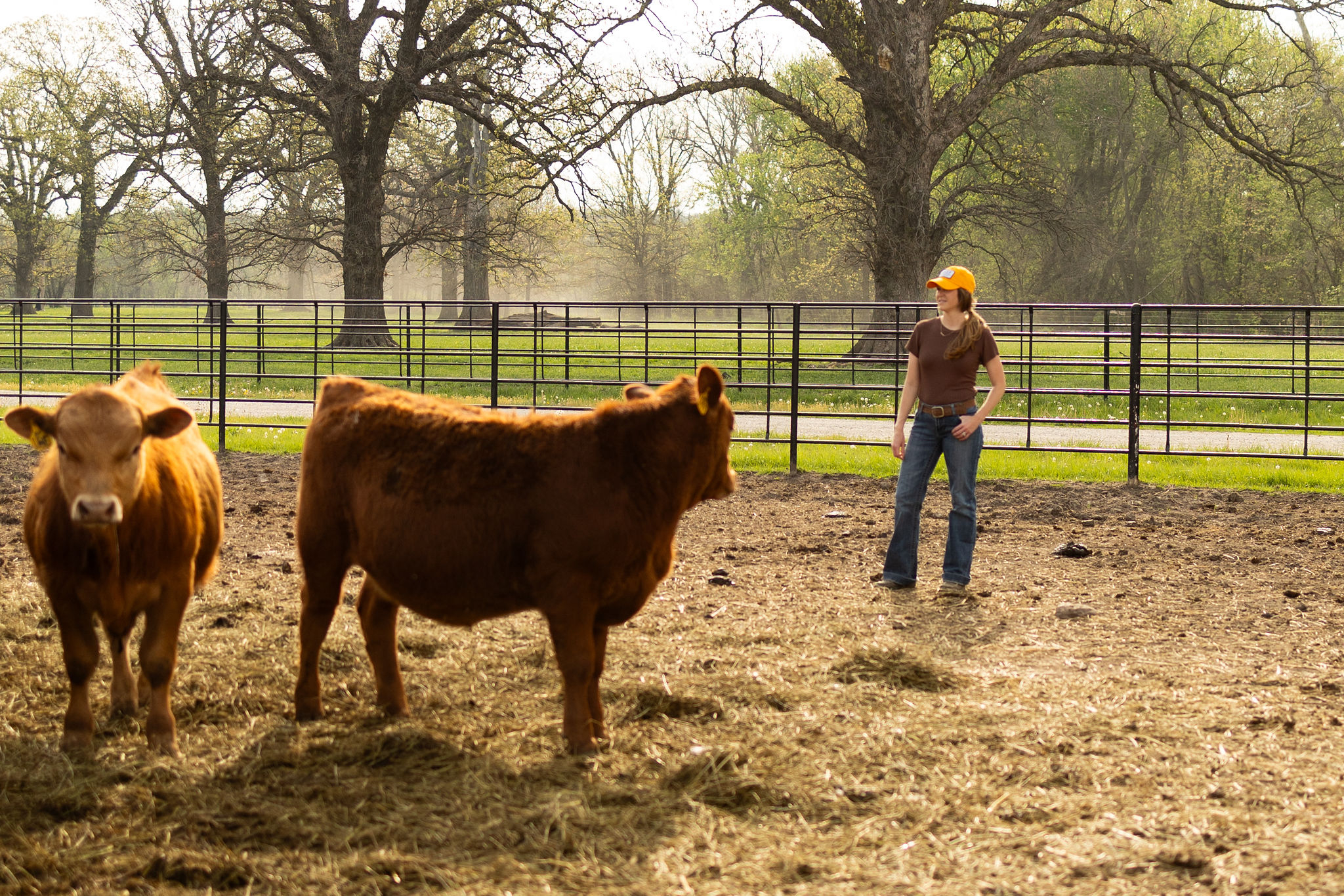Don’t run away from this post, please. I promise there are no graphic images embedded below that will make you regret your decision to read. That being said, I will not shy away from the fact that we slaughter cattle and we harvest corn.
This slaughter question was posed to me in the comments of this post. It is a touchy subject, because animals make the ultimate sacrifice in order for us to eat. This is not a sacrifice that I take lightly – I know that animals die in order for me to have a protein-filled diet. I care for them and give them the most comfortable life possible while they are in my care and I work very hard to make sure that they are well-cared for throughout their life.

Calves that will be sent to a feedlot
Our calves spend the first seven or so months of their lives at our ranch grazing on grass with their mamas before we sell them to a stocker (a fancy name for a rancher who raises cattle on grass) who will let them graze on grass in another area of the country before they are sent to a feedyard. Once our calves arrive at the feedyard, when they weigh around 900 pounds, they will be given a specially formulated diet that has vitamins, minerals, grains and hay/forage so that they can grow and create muscle efficiently.
Once they reach about 1300 pounds, the cattle will be sent to the packing plant where they are processed into beef. They will be calmly loaded onto a truck called a cattle pot, and then driven to the packing plant – generally they will arrive in the morning so that they don’t have to stand on the truck for a long time. They are unloaded via ramp into holding pens at the packing plant. These plants and their pens have all been designed to give the animals a safe environment before slaughter – what that means is that all the pens have nonslip flooring and the pens will be clean and have plenty of fresh water for the cattle to drink.
A very important piece of information is that 99% of the slaughter plants in the United States, and most of the developed world, were designed by world-renowned animal behaviorist Dr. Temple Grandin. Dr. Grandin has conducted and published hundreds of animal welfare and behavior studies – she is a person with high-functioning autism which gives her a very unique perspective when it comes to understanding how animals behave and react to certain settings. When livestock slaughter facilities are built, a tremendous amount of attention is paid to every single detail – from the type of flooring in the pens, to the materials used on the conveyor belt, to the amount of light that shines in the animals’ eyes as they walk to the chute. No aspect of animal behavior or welfare is left unconsidered.

Image courtesy: http://www.grandin.com/design/blueprint/curved.cattle.layout.html
Here is a photo of a normal chute in a processing plant – as you can see it has a serpentine-type system with very high walls so that the animal feels like it is weaving back towards its original location. A key feature is the cattle cannot see any of the humans on the outside of the walls, which prevents them from getting scared and stressed out.
As I mentioned, there are no graphic images in this blog post but there will be detail of the slaughter process – so if you are looking for somewhere to stop reading now would be a good stopping point.
When it is time for a pen of cattle to make their way to the chute, plant workers will move the cattle up through the serpentine system taking great care to not shout or scare any animals – they will not use electric prods, they use what are called rattle paddles or sorting sticks. Some sorting sticks will have a plastic sack tied on the end in order to make some noise that will move them along but not spook or stress them. One by one the cattle will be walked up the ramp; when they reach the end of the ramp a V-shaped conveyor belt gently lifts them and moves them through to what is called the “knock box.” This conveyor belt immobilizes their legs, but doesn’t restrain them or make them feel frightened – when the cattle are brought into the knock box by the conveyor belt, their head is aligned so that one quick strike with a captive bolt gun renders them brain-dead.
A captive bolt gun is a pneumatic device that penetrates the brain rendering the animal brain-dead so that it feels no pain during the exsanguination (bleeding out) process. The operator of the captive bolt gun has undergone extensive specialty training, so that he can ensure only one attempt is needed to successfully bolt the animal.
After the animal has been “knocked,” a chain is attached to its back leg and it’s lifted up onto the processing line where it’s quickly exsanguinated by a skilled worker. As the carcass moves down the line, pulsating electric shocks are periodically administered to the body to ensure all blood is drained from the carcass. From here, the carcass will be dehided and then stored in a cooler for 24 hours before processed into large primal cuts of beef that will be distributed to retail outlets around the country.
Perhaps one of the most important aspects of slaughter and the process, is the presence of USDA inspectors at all points of the slaughter and processing line. There are USDA inspectors monitoring the holding pens, the knock box, multiple places throughout the processing chain and in the coolers where the sides of beef are stored. There are inspectors checking for antibiotic residues, there are inspectors checking for signs of disease and bruising, there are inspectors checking for abnormalities – the average large meat processing plant has 12-14 number of inspectors working and safeguarding our food supply at any point in time.
If you are looking for a walk-through of a plant, here is a phenomenal video with Dr. Grandin.
I have visited many slaughter plants (on multiple continents) for both cattle and hogs, and while it is a difficult process to watch, I believe it’s necessary so that we are cognizant of the sacrifice that livestock make so that people can eat.
If you have more questions about livestock production or cattle – please let me know!
Until next time,
~ Buzzard ~
P.S. Don’t forget to sign up for automatic posts in your inbox in the right sidepane on the homepage. I never use your email address for marketing purposes, only for post delivery.



